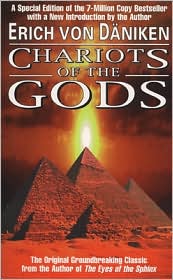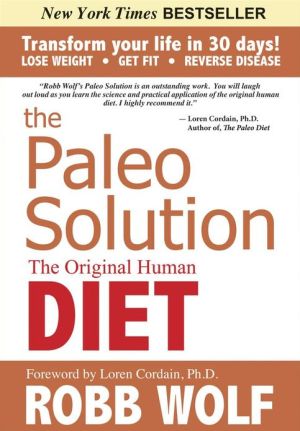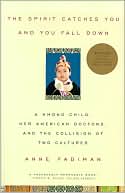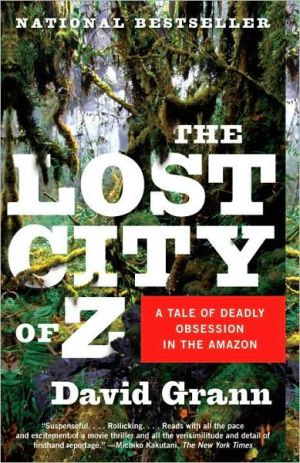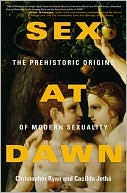World Prehistory and Archaeology
Search in google:
Have you seen World Prehistory and Archaeology: Pathways through Time yet?World Prehistory and Archaeology: Pathways through Time integrates world prehistory with a discussion of archaeological methods and techniques--emphasizing the relevance of how we know what we know about our human prehistory. It provides the tools to allow for a lifelong engagement with archaeology, and draws students into the process of archaeological research and discovery.The author, Michael Chazan, brings students to the cutting edge of archaeological research by presenting the most recent discoveries and theoretical perspectives. For how we know the past is inseparable from what we know of the past. His text allows students to see that archaeology is a dynamic field in which knowledge is continually refined through scientific inquiry--while providing a sense of the relevance of archaeology in the contemporary world.The cornerstone of this book presents an integrated picture of prehistory as an active process of discovery--where methodological issues are not relegated to the opening chapters alone. While the introduction to archaeological methods in the first two chapters is necessary, the questions of how we know the past are not abandoned at that point. In fact, a number of key features--found within every chapter--have been especially developed for this text in order to draw together an integrated presentation of prehistory for students.So what are you waiting for? Contact your local publisher's representative today for YOUR review copy and see how World Prehistory and Archaeology will be able to draw YOUR students into the amazing world of archaeological reserach and discovery!
BRIEF CONTENTSPART ONE:THE PAST IS A FOREIGN COUNTRY: GETTING FROM HERE TO THERE CHAPTER 1 GETTING STARTED IN ARCHAEOLOGY CHAPTER 2 PUTTING THE PICTURE TOGETHER PART TWO:HUMAN EVOLUTION CHAPTER 3 EARLY HOMININS CHAPTER 4 FROM Homo erectus TO NEANDERTHALS CHAPTER 5 THE ORIGIN OF MODERN HUMANS CHAPTER 6 THE PEOPLING OF AUSTRALIA AND THE NEW WORLD PART THREE:PERSPECTIVES ON AGRICULTURE CHAPTER 7 TOWERS, VILLAGES, AND LONGHOUSES CHAPTER 8 MOUNDS AND MAIZE CHAPTER 9 A FEAST OF DIVERSITY PART FOUR:THE DEVELOPMENT OF SOCIAL COMPLEXITYCHAPTER 10 COMPLEXITY WITHOUT THE STATE CHAPTER 11 CITIES AND PYRAMIDS: Early States of Mesopotamia and Egypt CHAPTER 12 ENIGMAS AND DIVERSITY: Early States in Europe and Asia CHAPTER 13 FROM CITY TO EMPIRE: Social Complexity in Mesoamerica CHAPTER 14 BRINGING THE FOUR PARTS TOGETHER: States and Empire in the Andes EPILOGUE BRINGING IT BACK HOME APPENDICES GLOSSARY REFERENCES FIGURE AND PHOTO CREDITS NAME INDEX SUBJECT INDEX FULL CONTENTSPrefaceAbout the Author PART ONETHE PAST IS A FOREIGN COUNTRY: GETTING FROM HERE TO THERE Introduction: Questions of Time and Ethics CHAPTER 1: GETTING STARTED IN ARCHAEOLOGY 1.1 Reading the LandscapeSurvey DesignGeological FactorsRecovery Methods and GIS1.2 ExcavationHorizontal ExcavationVertical ExcavationControlling Horizontal and Vertical SpaceRecovery MethodsRecording Methods1.3 Artifacts and EcofactsFROM THE FIELD: The Author on His Fieldwork at Wonderwerk Cave, South Africa1.4 Biases in Preservation1.5 Quantification and SamplingCounting BonesCounting ArtifactsTOOLBOX: Ethnoarchaeology1.6 Creating a Chronology1.7 ComparisonTOOLBOX: Radiocarbon Dating1.8 Conservation and DisplayARCHAEOLOGY IN THE WORLD: Community ArchaeologyChapter SummaryKey TermsReview QuestionsCHAPTER 2: PUTTING THE PICTURE TOGETHER 2.1 Origins of ArchaeologyARCHAEOLOGY IN THE WORLD: Thomas Jefferson, the Archaeologist2.2 The Emergence of ArchaeologyOrganizing TimeThe Establishment of Human AntiquityImperial Archaeology2.3 Developing Method and TheoryStratigraphic Method and Culture HistoryV. Gordon Childe2.4 Archaeology as ScienceDeveloping Scientific MethodsThe New ArchaeologySystems TheoryTOOLBOX: Faunal Analysis and Taphonomy2.5 Alternative PerspectivesPostprocessual ArchaeologyGender and AgencyTOOLBOX: ArchaeoacousticsEvolutionary Archaeology2.6 Archaeology at the Trowel’s EdgeFROM THE FIELD: Different Views of a Site, by Peter RobertshawSummaryKey TermsReview QuestionsPART TWO: HUMAN EVOLUTION Introduction: Our Place in Nature CHAPTER 3: EARLY HOMININS 3.1 The Fossil RecordThe Early Hominin Radiation3.2 Setting the SceneThe East African Rift ValleyARCHAEOLOGY IN THE WORLD: Fraud–Piltdown and Kama-takamoriLower PaleolithicFROM THE FIELD: Following the Footsteps of Our Ancestors, by Andrew DuTOOLBOX: Stone Tools 693.3 The Origin of Tool UseTool Use by AnimalsThe Archaeological Evidence3.4 Hunting and Sharing FoodWere They Hunters?TOOLBOX: Dating Early Hominin SitesLiving Floors and Base CampsThe Use of Fire3.5 The Expansion of the Hominin WorldUbeidiya and DmanisiEast AsiaSumming Up the EvidenceSummary 83 Key TermsReview QuestionsCHAPTER 4: FROM Homo erectus TO NEANDERTHALS 4.1 Defining the Ice Age4.2 Before the NeanderthalsThe Initial Occupation of Western EuropeThe Acheulian ProblemBeyond Stone Tools4.3 NeanderthalsNeanderthal GeneticsChronology and EcologyARCHAEOLOGY IN THE WORLD: Religion and Evolution4.4 Aspects of Neanderthal Culture and AdaptationStone ToolsTOOLBOX: Chaîne Opératoire and the Levallois MethodHuntingSite Organization and the Use of FireTreatment of the DeadTOOLBOX: Geoarchaeology and MicromorphologyFROM THE FIELD: A Paleoepiphany, by Lynne A. SchepartzArtworkNeanderthal SocietySummaryKey TermsReview QuestionsCHAPTER 5: THE ORIGIN OF MODERN HUMANS 5.1 What Is a Modern Human?5.2 Early Modern Humans in AfricaThe African Middle Stone AgeFROM THE FIELD: The Strange Case of the Grimaldi Figurines, by Michael S. BissonComparing the Middle Stone Age and the Middle Paleolithic5.3 Early Modern Humans in the Middle EastThe Archaeological RecordChronologyAssessing the Middle Eastern PatternTOOLBOX: Luminescence Dating5.4 The Arrival of Modern Humans in Europe and the Fate of the NeanderthalsThe Fossil RecordARCHAEOLOGY IN THE WORLD: Modern Human Origins and Questions of RaceGenetic EvidenceArchaeological EvidenceThe Last NeanderthalsSumming Up the Evidence5.5 The Upper PaleolithicChronologyStone and Bone ToolsHuman BurialsTOOLBOX: Use—Wear AnalysisArtworkSite StructureSubsistence5.6 Explaining the Upper PaleolithicSummaryKey TermsReview QuestionsCHAPTER 6: THE PEOPLING OF AUSTRALIA AND THE NEW WORLD 6.1 Modern Humans in East Asia6.2 AustraliaDating the Earliest Human OccupationMegafauna ExtinctionRock ArtVoyaging OnTOOLBOX: Experimental Archaeology6.3 The New WorldClovis FirstTOOLBOX: Radiocarbon CalibrationPre-ClovisEarly Arrival ModelARCHAEOLOGY IN THE WORLD: Repatriation of Indigenous Burial RemainsThe Solutrean HypothesisThe Skeletal EvidenceFROM THE FIELD: Mawlukhotepun–Working Together, by Susan BlairClovis Adaptations and Megafauna ExtinctionSummaryKey TermsReview QuestionsPART THREE: PERSPECTIVES ON AGRICULTURE Introduction: Definitions of Agriculture CHAPTER 7: TOWERS, VILLAGES, AND LONGHOUSES 7.1 Setting the SceneARCHAEOLOGY IN THE WORLD: Political Borders and Archaeology7.2 Stage 1: Kebaran and Geometric KebaranTechnologySettlementsFROM THE FIELD: The Author on His Fieldwork at Wadi MatahaDomestication7.3 Stage 2: The NatufianTechnologySettlementsDomestication7.4 Stage 3: The Early NeolithicTechnologySettlementsRitualTOOLBOX: Harris MatrixDomestication7.5 Stage 4: Late NeolithicTOOLBOX: PaleoethnobotanyTechnologySettlement and RitualDomestication7.6 Assessing the Neolithic Revolution7.7 The Spread of Agriculture to EuropeSumming Up the EvidenceSummaryKey TermsReview QuestionsCHAPTER 8: MOUNDS AND MAIZE 8.1 Plant Domestication in MesoamericaTOOLBOX: AMS Radiocarbon Dating8.2 Maize Agriculture in theAmerican SouthwestThe Formative PeriodSumming Up the EvidenceTOOLBOX: Hand-Built Pottery8.3 Eastern North AmericaThe Indigenous Domestication of PlantsThe Adena and HopewellIntensification of Maize AgricultureARCHAEOLOGY IN THE WORLD: Who Owns the Past?The People Behind the TransitionSumming Up the EvidenceFROM THE FIELD: “Towns They Have None:” In Search of New England’s Mobile Farmers, by Elizabeth S. ChiltonSummaryKey TermsReview QuestionsCHAPTER 9: A FEAST OF DIVERSITY 9.1 AfricaVillages of Hunter—GatherersPastoralistsThe First FarmersFROM THE FIELD: Ethiopian Farmers Yesterday and Today, by Catherine D’AndreaSumming Up the Evidence9.2 New GuineaClearing Forests and Draining SwampsTOOLBOX: Pollen, Phytoliths, and Starch Grains9.3 The Andes 234Domestication in the Andean HighlandsCoastal VillagesThe Cotton PreceramicThe Role of El NiñoSumming Up the Evidence9.4 East Asia 239Early PotteryThe First FarmersTOOLBOX: Residue AnalysisThe Development of Farming SocietiesSumming Up the EvidenceARCHAEOLOGY IN THE WORLD: Archaeology and the Environment9.5 Questioning the Neolithic 243SummaryKey TermsReview Questions

